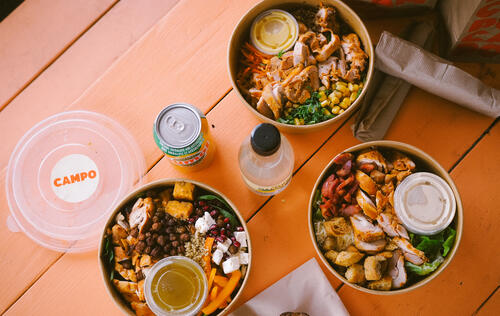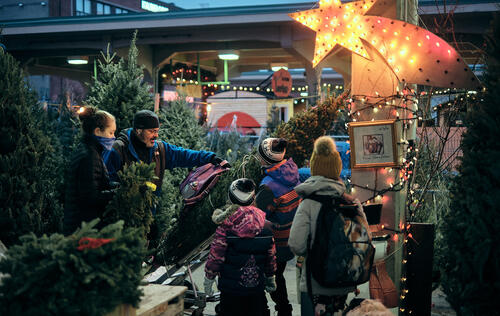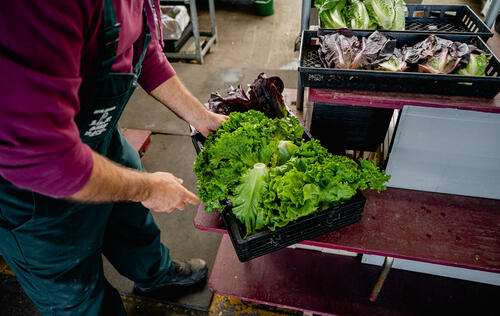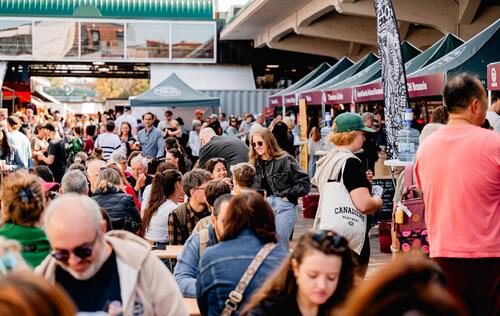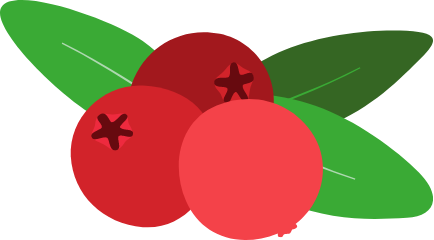Quebec is completely bubble!
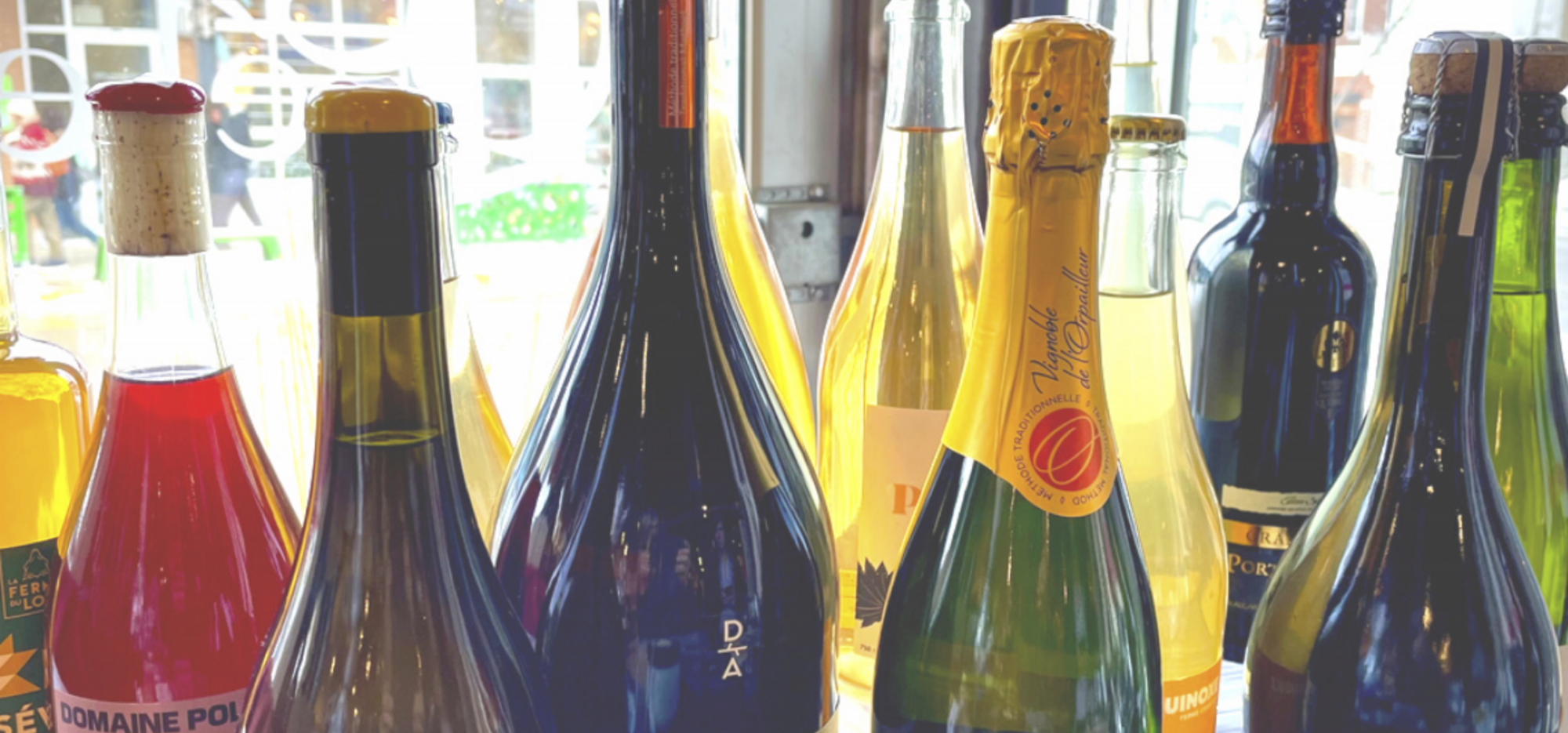
It's that time of year when there's no shortage of opportunities to celebrate. And to have a truly festive feast, bubbles are a must! This year, forget Champagnes, Cavas, and Proseccos. Quebec bubbles are in the spotlight. And for good reason: the selection is constantly improving, and the surprises are multiplying.
But let's start at the beginning: how do bubbles form in wine?
The Birth of a Bubble
Are bubbles in wine magic or science? A bit of both, actually. We'll focus on the two methods of producing bubbles that you're likely to find in Quebec products.
There's the so-called traditional method (also called "champenoise," although this designation is reserved only for Champagne wines). A still wine is transformed into a sparkling wine by adding yeast during bottling, after a first fermentation. This yeast will eventually transform the sugar in the must into alcohol during the second fermentation. Since the carbon dioxide from this second fermentation cannot escape from the bottle, it will dissolve in the wine. The bubbles are born!
The other way to create bubbles in wine is the so-called ancestral method. Pet Nat (pétillant naturel), which is constantly gaining popularity, is therefore not so new. In fact, it's the oldest way to produce bubbles. Once the grapes are pressed, fermentation begins to transform them into alcohol. The temperature of the wine is lowered below 10°C so that the yeasts stop their activity and "fall asleep." It's time to bottle the wine. The temperature is then raised again, and fermentation resumes in the bottle. Once again, the carbon dioxide produced by fermentation remains trapped in the bottle and dissolves in the wine! Another bubble is born.
The Quebec Bubble: A Unique Product
Quebec sparkling wines are becoming the true stars of Quebec wine production. And it's not by trying to imitate others, but by drawing on their specific characteristics that our sparkling wines stand out. "The distinctive character of Quebec sparkling wines is that there is no one in the world who makes blends of Frontenac Blanc, Frontenac Gris, Acadie Blanc, and Saint-Pépin," columnist Nadia Fournier told Le Devoir in 2019.
Our northern climate is also a major asset when it comes to producing distinctive sparkling wines. Indeed, it promotes higher acidity levels and lower sugar levels, ideal for producing good sparkling wines.
Quebec's winemaking future has a good chance of being punctuated by bubbles!
When Bubbles Become Maple
Maple is an iconic product of Quebec. And maple syrup producers are striving to bring it out of folklore and magnify it for future generations. Thus, wines, liqueurs, and beverages have been born that make maple (and those who drink them) sing.
Bubbles are not left out. Whether it's Mousse des bois from Domaine Acer, Mille Bois Mousseux from Mille Bois, or the brand new Pet Nat Fruits et Fleurs Sauvages from Ferme du Loup, maple sap proves that grapes are no longer the only thing that makes us want to pop the cork to celebrate special occasions.
Laurent Mavier's suggestions from the Marché des saveurs du Québec at the Jean-Talon Market
Vignoble Seigneurie de Liret
Nuage effervescent: Literally a Quebec champagne! Pinot Noir, Pinot Meunier, and Chardonnay are the grape varieties used in the production of this champagne. Aging on slats for three years produces the fine bubbles sought after in these types of wines, and its white fruit aromas rival those of its French counterparts.
Mousse des vents: Also produced using the traditional method, this rosé wine stands out for its use of rustic grape varieties that are among the most representative of the Quebec terroir. Vidal, Frontenac Blanc, and Baco Noir give it a beautiful color and aromas of red berries, making this wine particularly festive.
Domaine Bergeville Vineyard
L'Intégral 2019: A classic among Quebec sparkling wines! This organic white sparkling wine is cultivated using biodynamic methods. Floral and mineral notes combine to create a very elegant wine with a long finish. A perfect match for seafood. Note that the Intégral is unfined, making it suitable for vegans.
Domaine Acer Vineyard
Mousse des bois: A wonderful surprise for your guests! No grapes in these sparkling wines, only organic maple sap from the estate. Matured using the traditional method, it is available in two versions, brut and extra-brut. The former brings woody notes and green apples, while the latter offers minerality and a subtle maple finish. It is also available in magnum, a format often ideal for the holidays.
Suggestions from the Douceurs du Marché team of advisors at Atwater Market
Vignoble Les Bacchantes
M1: This is the sparkling wine you need to celebrate the holidays! Dry, fairly classic in style, and made using the traditional method, it is one of the most popular wines in the boutique. Its 18-month aging on lees gives it fine and abundant bubbles. Made from 100% Vidal, the bouquet opens with notes of apple, mango, and white flowers.
Vignoble La Cache
Frizzotis Rouge: Have you ever tried a sparkling red? Surprise your guests with this extraordinary wine! Made from the hybrid grape varieties Sainte-Croix, Maréchal Foch, and Vandal-Cliche, this wine will charm you with its notes of blackberry, cranberry, and raspberry. It is dry, unfined, and unfiltered. Try it as an aperitif with savory charcuterie or, at the table, with pork tenderloin in cranberry sauce or a beet and goat cheese salad!
Château de Cartes Vineyard
PetNat Blanc: A sparkling white wine made from three cuvées: Sainte-Croix, Frontenac Gris, and Vidal, blended together to deliver citrus aromas. It is cold-fermented in stainless steel tanks so that the wine expresses as much of its primary fruit as possible. We recommend it as an aperitif or with oysters.
La Cantina Vineyard
Blanc de Blanc: Finally, we highlight the Blanc de Blanc cuvée from La Cantina Vineyard located in the Oka Valley. Made from 100% Chardonnay, the nose opens with a bouquet of floral aromas followed by notes of citrus and pear. Quite versatile, it's perfect for festive gatherings, from aperitifs to dinner. Ideal with all your seafood, shellfish, and fine cheeses, for example.
Cheers!
